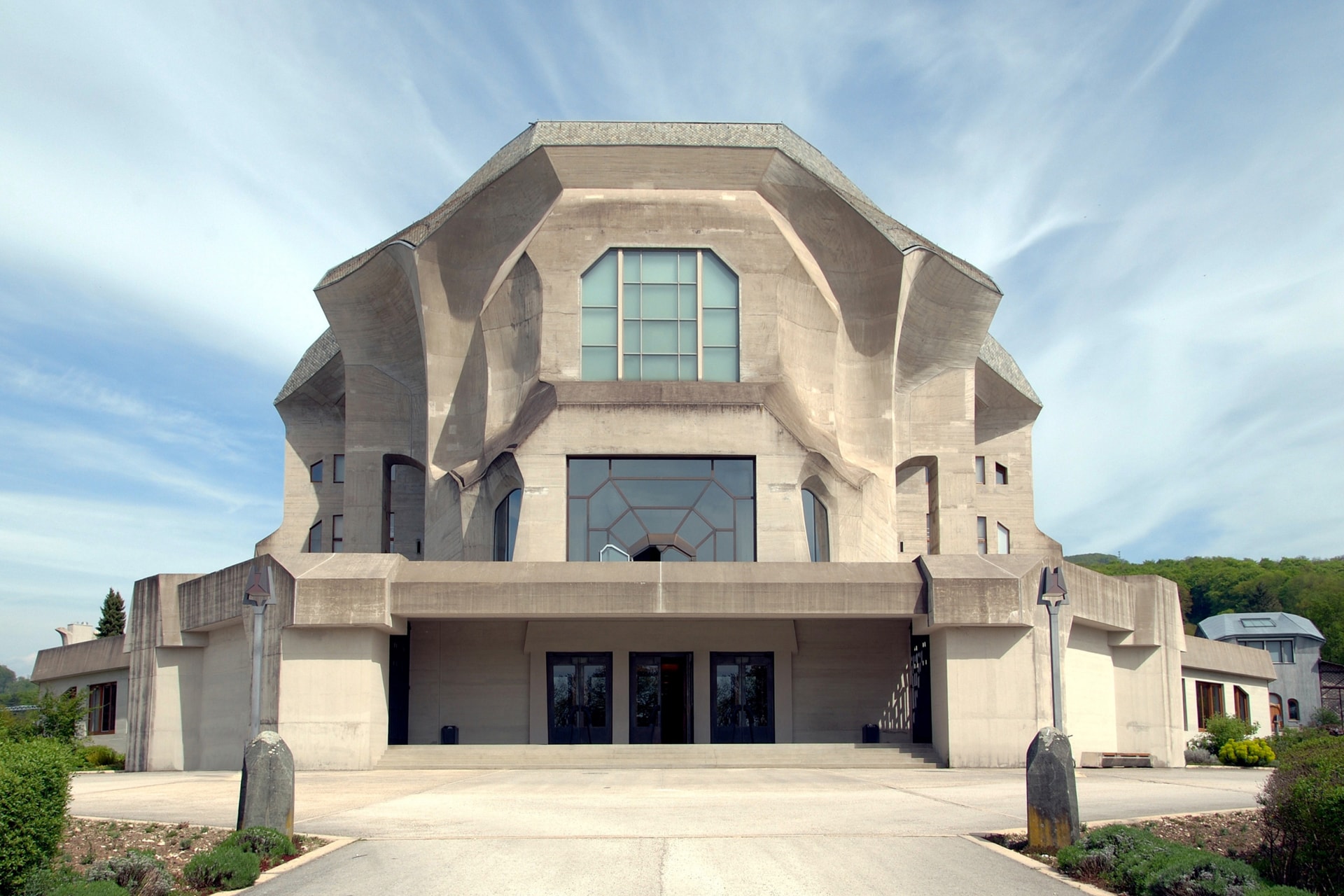View Finder Basel

-
The Goetheanum
The first thought one might have on approaching this obscurely designed building is likely to be — what on earth were they thinking? A question closely followed by — what is the point of it? And last, but by no means least — why oh why does it look like that? Bear with us for a moment, and we’ll tell you.
The first clue to understanding this curious block of concrete on top of a hill in Dornach, just outside the Swiss city of Basel, is to know that Rudolf Steiner, the man who designed it, wasn’t just an architect but also the founder of anthroposophy.
Anthro-what now?
Anthroposophy is, in essence, a school of thought dedicated to man’s relationship with the spiritual world and the development of an individual’s intuition, inspiration and imagination. The Goetheanum was intended to act as a centre for the entire anthroposophical movement and was named (naturally) after the famous German writer, Johann Wolfgang von Goethe, whom Steiner had studied and greatly admired. The foundations for the first Goetheanum were laid in September 1913, but after what one might assume was a pretty wild end of year party, the building burned down on New Year’s Eve, 1922.
What you now see before you is, technically, the second Goetheanum. Started in 1924 and completed in 1928, this subsequent endeavour was not only inspired by the first but was also a product that came from mourning a great loss — the very first home of a flourishing society. Steiner therefore considered it to be a representation of the movement’s development since the time of its foundation. The shape of the building, moulded in obtuse concrete waves, relates back to the founding ideas of anthroposophy itself, where the designers sought to create forms that were both physically and spiritually expressive. Today, the building has been granted protected status as a Swiss national monument and it has been called a true masterpiece of 20th-century expressionist architecture.
What first meets the eye in Dornach is something odd and intriguing that seems to pose more questions than it answers. Fortunately, all those questions only add to the overall experience of understanding what this building is truly about and, before you’ve even entered, you’ll have already taken a step towards spiritual enlightenment.